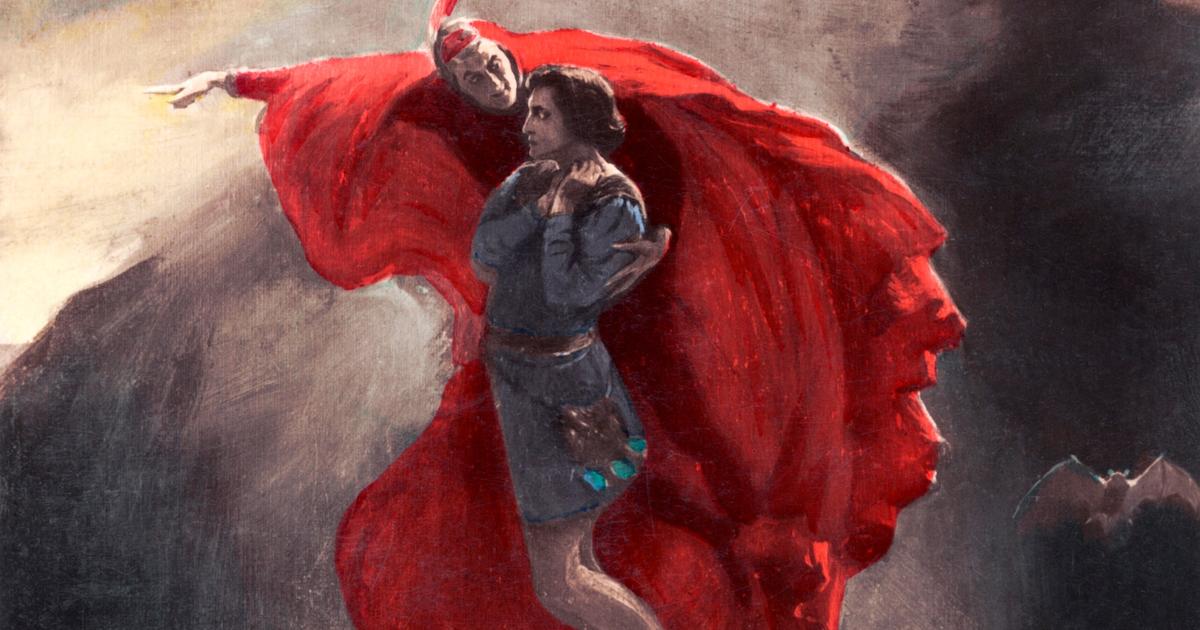On the death of Sempé: Merci, genius!
Created: 08/12/2022, 1:45 p.m
By: Michael Schleicher
Sempé in his Paris studio.
© STEPHANE DE SAKUTIN/dpa
Jean-Jacques Sempé is dead. The draftsman and illustrator who created "Little Nick", for example, died at the age of 89.
Our obituary:
Of course, it's up to little Nick, probably his most famous character, to formulate the first thought of this text: Nick and his friends, Otto, Franz, Georg and all the others, founded a real gang.
They called themselves “The Invincibles”, of course – and their motto was: “Invincible Courage”.
Nick, this bright little boy, came to the first meeting unpunctually, of course.
"I was a bit late, because the teacher kept me there because I made a mistake in the arithmetic problem - I have to tell Dad so that he pays more attention." Luckily, however, he knew the code word - in contrast to Clovis, which nearly ended in a glorious scuffle.
Sempé: He would have turned 90 on August 17th
But that's another story.
Because maybe these few lines already say everything about the timeless magic, the knowledge of human nature, the precise power of observation and the fine wit that characterize the work of Jean-Jacques Sempé.
Now it's not just little Nick who mourns the loss of his creator.
If it's true that heaven can cry, now is the moment: Sempé died on Thursday, August 11, 2022 - a few days before his 90th birthday, which he could have celebrated next Wednesday.
Sempé created “Little Nick” with René Goscinny
The children's book series "Little Nick", written by René Goscinny, the father of "Asterix", and illustrated by Sempé, was published between 1959 and 1964. It made the artist famous - and to this day makes everyone happy: those who read themselves;
those who read;
those who listen.
But it's also a wonderful life that Nick and his friends lead.
Very different from Sempé's.
He was the "most beautiful baby in Bordeaux", he recalled in 2011 in the magnificent volume "Childhood".
This is even officially confirmed at a competition after his birth – but little Jean-Jacques, who was born on August 17, 1932, grew up in terrible circumstances.
The illegitimate child lives with brutal foster parents, then his mother takes him back.
His stepfather, Monsieur Sempé,
the boy actually likes it - but he was never able to show it, "because of my mother, who was always angry with him and therefore prevented me from loving him".
The man is fond of alcohol, but doesn't tolerate it: "He just wasn't the same person anymore." For Jean-Jacques, his half-brothers and sisters, that's the horror.
"Do you think anyone can care less when they see their father and mother beating up?
I don't think so," he wonders, adding: "My childhood really wasn't funny at all.
That is certainly the reason why I love the cheerful.” With the adventures of little Nick, the artist will always reassure himself later that things can end well after all.
“My big dream was a bicycle.
And my dearest wish was a normal, quiet family life.”
"because of my mother, who was always angry with him and therefore prevented me from loving him".
The man is fond of alcohol, but doesn't tolerate it: "He just wasn't the same person anymore." For Jean-Jacques, his half-brothers and sisters, that's the horror.
"Do you think anyone can care less when they see their father and mother beating up?
I don't think so," he wonders, adding: "My childhood really wasn't funny at all.
That is certainly the reason why I love the cheerful.” With the adventures of little Nick, the artist will always reassure himself later that things can end well after all.
“My big dream was a bicycle.
And my dearest wish was a normal, quiet family life.”
"because of my mother, who was always angry with him and therefore prevented me from loving him".
The man is fond of alcohol, but doesn't tolerate it: "He just wasn't the same person anymore." For Jean-Jacques, his half-brothers and sisters, that's the horror.
"Do you think anyone can care less when they see their father and mother beating up?
I don't think so," he wonders, adding: "My childhood really wasn't funny at all.
That is certainly the reason why I love the cheerful.” Later, with the adventures of little Nick, the artist will always reassure himself that things can end well after all.
“My big dream was a bicycle.
And my dearest wish was a normal, quiet family life.”
The man is fond of alcohol, but doesn't tolerate it: "He just wasn't the same person anymore." For Jean-Jacques, his half-brothers and sisters, that's the horror.
"Do you think anyone can care less when they see their father and mother beating up?
I don't think so," he wonders, adding: "My childhood really wasn't funny at all.
That is certainly the reason why I love the cheerful.” With the adventures of little Nick, the artist will always reassure himself later that things can end well after all.
“My big dream was a bicycle.
And my dearest wish was a normal, quiet family life.”
The man is fond of alcohol, but doesn't tolerate it: "He just wasn't the same person anymore." For Jean-Jacques, his half-brothers and sisters, that's the horror.
"Do you think anyone can care less when they see their father and mother beating up?
I don't think so," he wonders, adding: "My childhood really wasn't funny at all.
That is certainly the reason why I love the cheerful.” With the adventures of little Nick, the artist will always reassure himself later that things can end well after all.
“My big dream was a bicycle.
And my dearest wish was a normal, quiet family life.”
"Do you think anyone can care less when they see their father and mother beating up?
I don't think so," he wonders, adding: "My childhood really wasn't funny at all.
That is certainly the reason why I love the cheerful.” Later, with the adventures of little Nick, the artist will always reassure himself that things can end well after all.
“My big dream was a bicycle.
And my dearest wish was a normal, quiet family life.”
"Do you think anyone can care less when they see their father and mother beating up?
I don't think so," he asks himself, and says, "My childhood was really anything but funny.
That is certainly the reason why I love the cheerful.” Later, with the adventures of little Nick, the artist will always reassure himself that things can end well after all.
“My big dream was a bicycle.
And my dearest wish was a normal, quiet family life.”
that it can turn out well.
“My big dream was a bicycle.
And my dearest wish was a normal, quiet family life.”
that it can turn out well.
“My big dream was a bicycle.
And my dearest wish was a normal, quiet family life.”
Sempé actually wanted to be a jazz musician
Anyone who recognizes the need that speaks from this quote knows why Sempé took his life into his own hands at an early age.
He dreams of becoming a jazz musician - like Duke Ellington, Dizzy Gillespie or Charlie Parker, whom he heard on the radio as a boy.
But he becomes a draftsman and caricaturist and it takes a while before he can make a living from art.
He published his first illustrations and cartoons in the early 1950s, at that time still under the pseudonym DRO, which is derived from the English verb "to draw".
In France, "Paris Match", "Marie Claire", "L'Express" and the comic magazine "Pilote" took notice of him.
Then the foreign editors knocked on the door of the French: the “Punch” from London, the “New York Times” and from 1978 onwards the “New Yorker” again and again.
He designed more than 50 cover pictures for the renowned magazine.
Patrick Süskind and Sempé created "Mr. Summer"
Artistically, Sempé succeeds in capturing people in their imperfections.
With conscientious observation, an eye for the essentials and his subtle humor, he holds the mirror up to us all: in our eccentricities, with our rough edges, neuroses, fears, our hubris, our need, but also our love of life.
Like no other draftsman, the Frenchman captures the essence of existence - and never loses his warm-hearted view of it.
That shows in his style.
Sempé is not a loud artist, not one who boldly prefers powerful strokes.
On the contrary: his drawings are extremely delicate, often worked exclusively in ink.
When he colors, they are gentle watercolors - translucent and yet wonderfully concise.
An example of this is "The Story of Mr. Summer",
also read
Perseids 2022: Who Was Perseus?
The wild story behind Shooting Stars Night
Emotional finale at Munich mega concert: Pop star Andreas Gabalier "almost tears come"
Sempé: "The only thing that counts is the feeling"
"I think the only thing that counts is the feeling," the illustrator once said, explaining: "With everything else, you don't know where you are, or you know only too well where you are." Probably are his best works, therefore, are those aimed straight at the heart.
The image of the older man in green swimming trunks, for example, pretending to be an airplane with his arms outstretched on a deserted beach.
Happy, self absorbed.
Sempé is dead. And if there is one consolation, it might be this: we can all be part of the gang of little Nick and his friends.
Forever.
The slogan is "Invincible Courage".
We will not forget them.
Never.












/cloudfront-eu-central-1.images.arcpublishing.com/prisa/Z45E6KV7VJGUXAKJWH7VA4NJSE.jpg)

